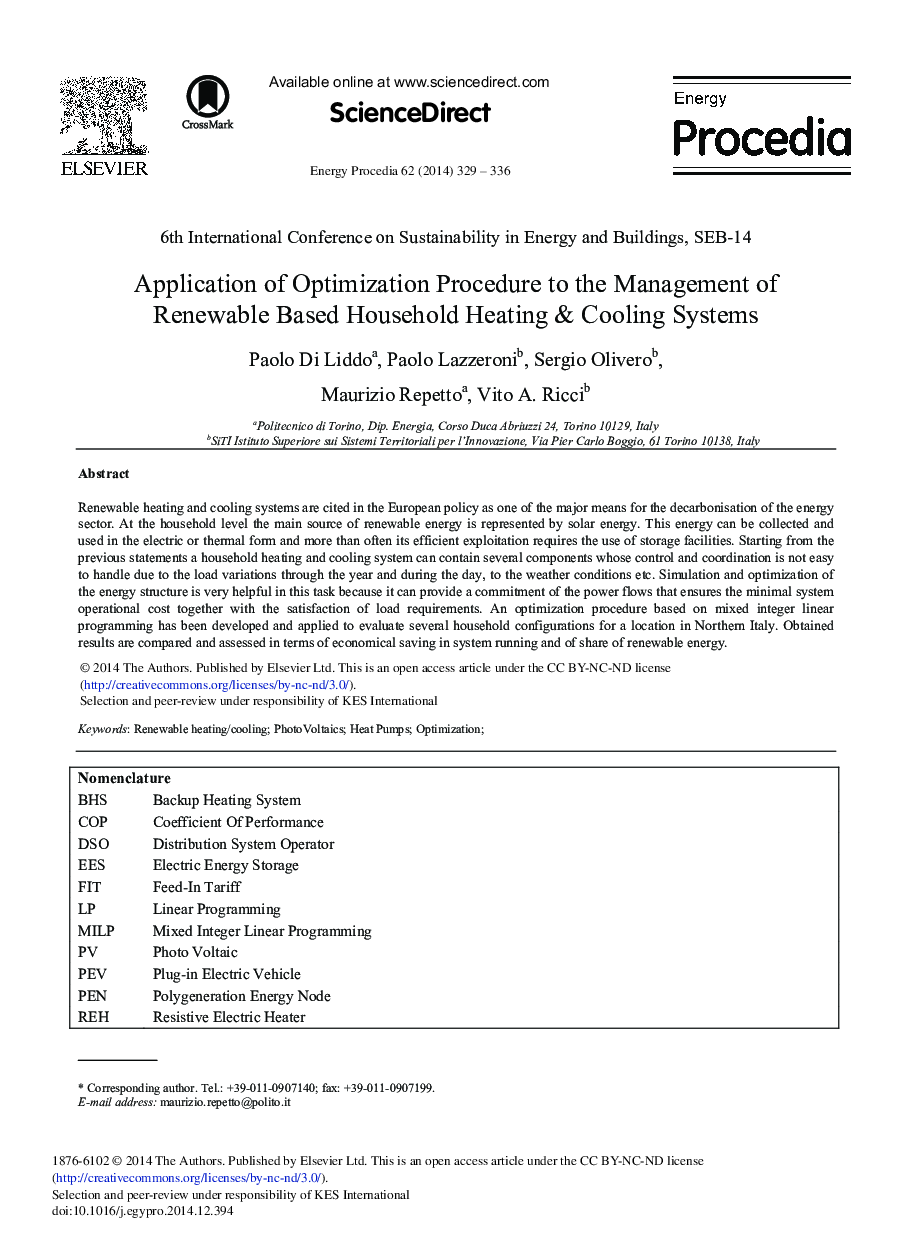| Article ID | Journal | Published Year | Pages | File Type |
|---|---|---|---|---|
| 1510119 | Energy Procedia | 2014 | 8 Pages |
Renewable heating and cooling systems are cited in the European policy as one of the major means for the decarbonisation of the energy sector. At the household level the main source of renewable energy is represented by solar energy. This energy can be collected and used in the electric or thermal form and more than often its efficient exploitation requires the use of storage facilities. Starting from the previous statements a household heating and cooling system can contain several components whose control and coordination is not easy to handle due to the load variations through the year and during the day, to the weather conditions etc. Simulation and optimization of the energy structure is very helpful in this task because it can provide a commitment of the power flows that ensures the minimal system operational cost together with the satisfaction of load requirements. An optimization procedure based on mixed integer linear programming has been developed and applied to evaluate several household configurations for a location in Northern Italy. Obtained results are compared and assessed in terms of economical saving in system running and of share of renewable energy.
